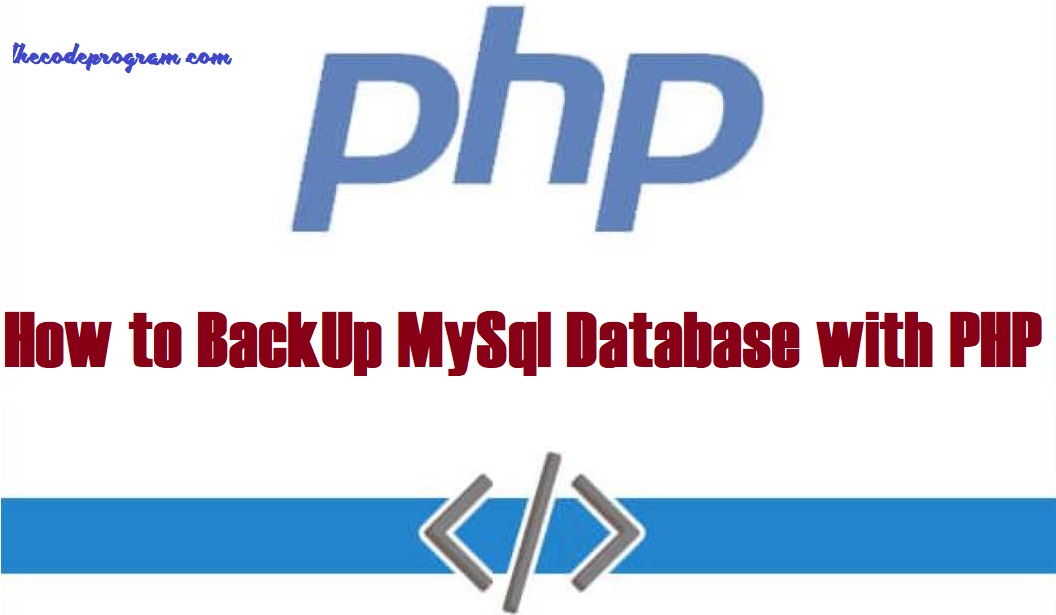
How to BackUp MySql Database with PHP
Hello everyone, in this article we are going to talk about MySql database backup with PHP. I will talk about both methods exec method and the all atable lists method in this article.Let's begin.
Sometimes we may need to get a backup of our MySql database, maybe you will move your website. It is easy very much to create a MySql backup and later download it in PHP. First We are going to get all table names and then we will create SQL queries with all contents of all these tables. And when all of these tasks are over it is turn to download the file.
Here first we have to declare our database connection configurations Here we declared hostname, username password name and the database which we will get backup. And then create MySql connection with connection configurations And then we set the charset as UTF8 of the connection
// Here first we have to declare our database connection configurations
//Here we declared hostname, username password name and the database which we will get backup.
$hostname = "localhost";
$username = "username";
$password = 'password';
$database_name = 'db_name';
// And then create MySql connection with connection configurations
$connection = mysqli_connect($hostname, $username, $password, $database_name);
// And then we set the charset as UTF8 of the connection
$connection->set_charset("utf8");
Until here our connection configurations are ready. After here we are going to get all datas inside the tables in specified database. To do this first we have to get all database tables And add them into an array variable to hold the database table list. And here we are going to declare a string variable to load all mysql datas into it.
//Until here our connection configurations are ready. After here we are going to get all datas inside the tables in specified database.
//To do this first we have to get all database tables And add them into an array variable to hold the database table list.
$tables = array();
$query_tables = mysqli_query($connection, "SHOW TABLES");
while ($rows = mysqli_fetch_row($query_tables)) {
$tables[] = $rows[0];
}
//And here we are going to declare a string variable to load all mysql datas into it.
$sqlQuery = "";
We will get all of table contents and load into this variable. first we have to create the table. This query will create the query string. Get all datas of these tables in here and also get all columns to use it in for loop to synchronise for all columns. We are going to get and append all rows and columns data in here with INSERT INTO command. This command will work and add all of datas inside the table.
// We will get all of table contents and load into this variable.
foreach ($tables as $table) {
// first we have to create the table. This query will create the query string.
$query = "SHOW CREATE TABLE " . $table;
$result = mysqli_query($connection, $query);
$row = mysqli_fetch_row($result);
$sqlQuery .= "\n" . $row[1] . ";\n";
//Get all datas of these tables in here
$query = "SELECT * FROM " . $table;
$result = mysqli_query($connection, $query);
//and also get all columns to use it in for loop to synchronise for all columns.
$columns = mysqli_num_fields($result);
// We are going to get and append all rows and columns data in here with INSERT INTO command. This command will work and add all of datas inside the table.
for ($i = 0; $i < $columns; $i ++) {
while ($row = mysqli_fetch_row($result)) {
$sqlQuery .= "INSERT INTO $table VALUES(";
for ($j = 0; $j < $columns; $j ++) {
$row[$j] = $row[$j];
if (isset($row[$j])) {
$sqlQuery .= '"' . $row[$j] . '"';
} else {
$sqlQuery .= '""';
}
if ($j < ($columns - 1)) {
$sqlQuery .= ',';
}
}
$sqlQuery .= ");\n";
}
}
$sqlQuery .= "";
}
//And lastly if the sql query string is not empty it will create the sql file.
if($sqlQuery != "")
{
// We will create the it with database name and the date as sql file
$backup_file_name = "backup_" . $database_name . '_' . date() . '.sql';
$fileHandler = fopen($backup_file_name, 'w+');
$number_of_lines = fwrite($fileHandler, $sqlQuery);
fclose($fileHandler);
// Lastly download the sql file.
header('Content-Description: File Transfer');
header('Content-Type: application/octet-stream');
header('Content-Disposition: attachment; filename=' . basename($backup_file_name));
header('Content-Transfer-Encoding: binary');
header('Expires: 0');
header('Cache-Control: must-revalidate');
header('Pragma: public');
header('Content-Length: ' . filesize($backup_file_name));
ob_clean();
flush();
readfile($backup_file_name);
exec('rm ' . $backup_file_name);
}
You can reach the PHP script via https://github.com/thecodeprogram/TheSingleFiles/blob/master/Backup_MySql_Database.php
That is all in this article.
Have a good backing up the mysql database.
I wish you all healthy days.
Burak Hamdi TUFAN.




Comments